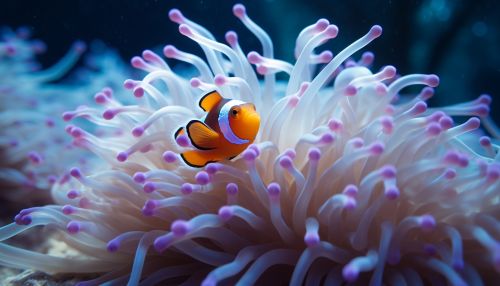The Role of Symbiotic Relationships in Ecosystem Stability
Introduction
Symbiotic relationships are a fundamental aspect of ecological systems, playing a crucial role in maintaining ecosystem stability. These relationships, which involve close and often long-term interactions between different species, can take various forms, including mutualism, commensalism, and parasitism. This article delves into the intricate dynamics of these relationships and their impacts on ecosystem stability.


Types of Symbiotic Relationships
Mutualism
Mutualism is a type of symbiotic relationship where both species involved benefit. This interaction often leads to an increase in the survival and reproductive success of the mutualistic organisms. An example of this is the relationship between bees and flowering plants. Bees gather nectar from flowers for food, while simultaneously aiding in the plant's pollination.
Commensalism
In commensal relationships, one species benefits, while the other is neither harmed nor helped. An example is the relationship between barnacles and whales. Barnacles attach themselves to the skin of whales, gaining a mobile habitat and access to nutrient-rich water, while the whales are generally unaffected.
Parasitism
Parasitism is a symbiotic relationship where one organism, the parasite, benefits at the expense of the host organism. Parasites can cause harm to their hosts in various ways, such as by feeding on their tissues or by introducing diseases.
Role in Ecosystem Stability
Symbiotic relationships contribute to ecosystem stability in several ways. They can influence species diversity, population dynamics, community structure, and energy flow.
Species Diversity
Symbiotic relationships can promote species diversity by providing survival advantages. For example, mutualistic relationships can enable species to exploit resources or habitats they could not access independently, leading to an increase in the number of species within an ecosystem.
Population Dynamics
Symbiotic relationships can also influence population dynamics. For instance, parasitic relationships can regulate host population sizes, preventing them from reaching levels that could destabilize the ecosystem.
Community Structure
Symbiotic interactions can shape community structure by affecting species' spatial distribution and abundance. For example, the presence of mutualistic partners can facilitate the establishment of certain plant species, influencing the composition of plant communities.
Energy Flow
Symbiotic relationships can affect energy flow in ecosystems. For instance, mutualistic relationships between plants and their pollinators or seed dispersers can enhance energy transfer through food webs, contributing to ecosystem productivity.
Conclusion
Symbiotic relationships, through their various forms and impacts, play a vital role in maintaining ecosystem stability. They influence species diversity, population dynamics, community structure, and energy flow, shaping the intricate dynamics of ecological systems. Understanding these relationships is crucial for conserving biodiversity and managing ecosystems sustainably.
